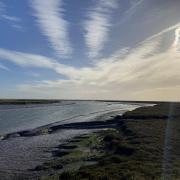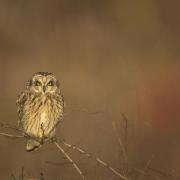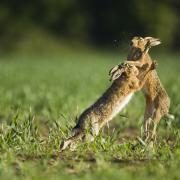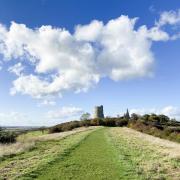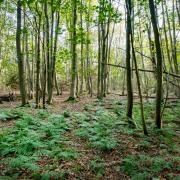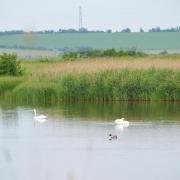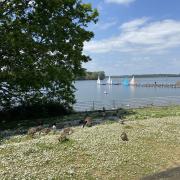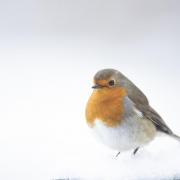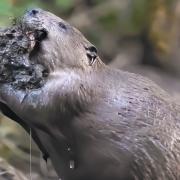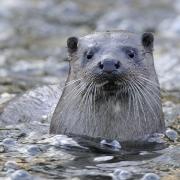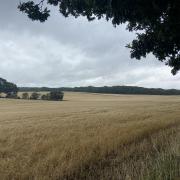Water voles in Essex: Andrew Fallan shares his expertise in Essex wildlife, sharing his views on the conservation and environmental issues that we face
Having been immortalised as Ratty in Kenneth Grahame’s timeless classic The Wind in the Willows, the focus of this month’s column has become one of our most iconic if seldom-seen mammals. Despite also being known as ‘water rats’, not to mention being superficially similar to the much-maligned brown rat, with which they are often confused, the animal to which I refer is, of course, that most charismatic inhabitant of our rivers, streams and wetlands — the water vole. Once common and widespread, this, the largest of our voles, has recently suffered a population crash of truly epic proportions, with numbers falling by nearly 90% in less than ten years during the 1980s and 1990s. In fact, such is the severity of their ongoing decline that, without our concerted efforts, Britain’s water voles could even be wiped out completely, which is quite a sobering thought. So, what has gone so terribly wrong for these once familiar creatures?
Although it would appear that the loss of suitable habitat has been a significant factor, perhaps also in conjunction with pollution, the real nail in the coffin for water voles was the introduction of the American mink, which, from the late 1920s onwards, were brought to the UK in large numbers to be incarcerated on fur farms. When, subsequently, these mink either escaped or were deliberately released, they quickly established a feral population and, being the brutally efficient predators that they are, proceeded to eat their way through our resident wildlife. Water voles were especially vulnerable, as not only did their natural defence of diving down and kicking up a smokescreen of dirt have little effect, but the smaller female mink were even able to pursue them into their waterside burrows – with the result that a single mink was able to lay waste to entire colonies of these endearing rodents. And given that mink are now widespread in the UK, with an estimated population of 110,000, it’s not difficult to see how they could have had such a devastating impact, almost seeming to be regarded, in conservation terms at least, as public enemy number one.
Although it’s easy to point the finger at the mink, even to demonise them as wanton killers, humans are, in fact, solely to blame for this situation. Mink did not invade our lands but were brought here by us, merely to satisfy our desire for fur coats, while we are also responsible for allowing these animals to subsequently enter ecosystems where, through no fault of their own, they simply don’t belong. Incidentally, it very much appears to be a myth that, due to large-scale releases in the 1990s, animal rights activists are to blame for mink becoming established in the wild – which, as a result of various escapes and perhaps also intentional releases, had already occurred some 40 years previously. It should also be remembered that, like all predators, mink are merely doing what nature impels them to do in order to survive and to feed their young. It seems that us humans simply can’t help ourselves from interfering with nature’s delicate balance, in this case in the name of so-called fashion, though it is always the animals themselves that pay the price for our thoughtless meddling.
Although water voles in Essex have certainly not been spared this tale of woe, you may still be in with a chance of glimpsing one, especially now that, thanks to the Essex Water Vole Recovery Project, they have been reintroduced along the River Colne and now seem to be spreading, which can only be good news. However, in my experience the best place to catch up with these elusive creatures is the RSPB’s Rainham Marshes, which nestles on the banks of the Thames right on the very edge of London. You will still need a generous helping of luck, but it was here that I saw my very first water vole, swimming across the water like a miniature guinea pig, while on subsequent visits I have been blessed with the kind of intimate encounters that I barely even thought were possible.
On one memorable occasion, when ambling along one of the boardwalks, I was utterly gobsmacked to discover a water vole sitting only a few feet beneath me, nibbling on the vegetation it held in its tiny front paws, while another time I saw a baby, or at least a youngster, right in front of the Marshland Discovery Zone, swimming about like a slightly oversized hamster.
So, if you fancy a close encounter with one of our most charismatic and endangered mammals, while also getting acquainted with a host of other wildlife, I suggest you pay a visit to Rainham Marshes.
For more information, go to www.rspb.org.uk and search for Rainham Marshes






